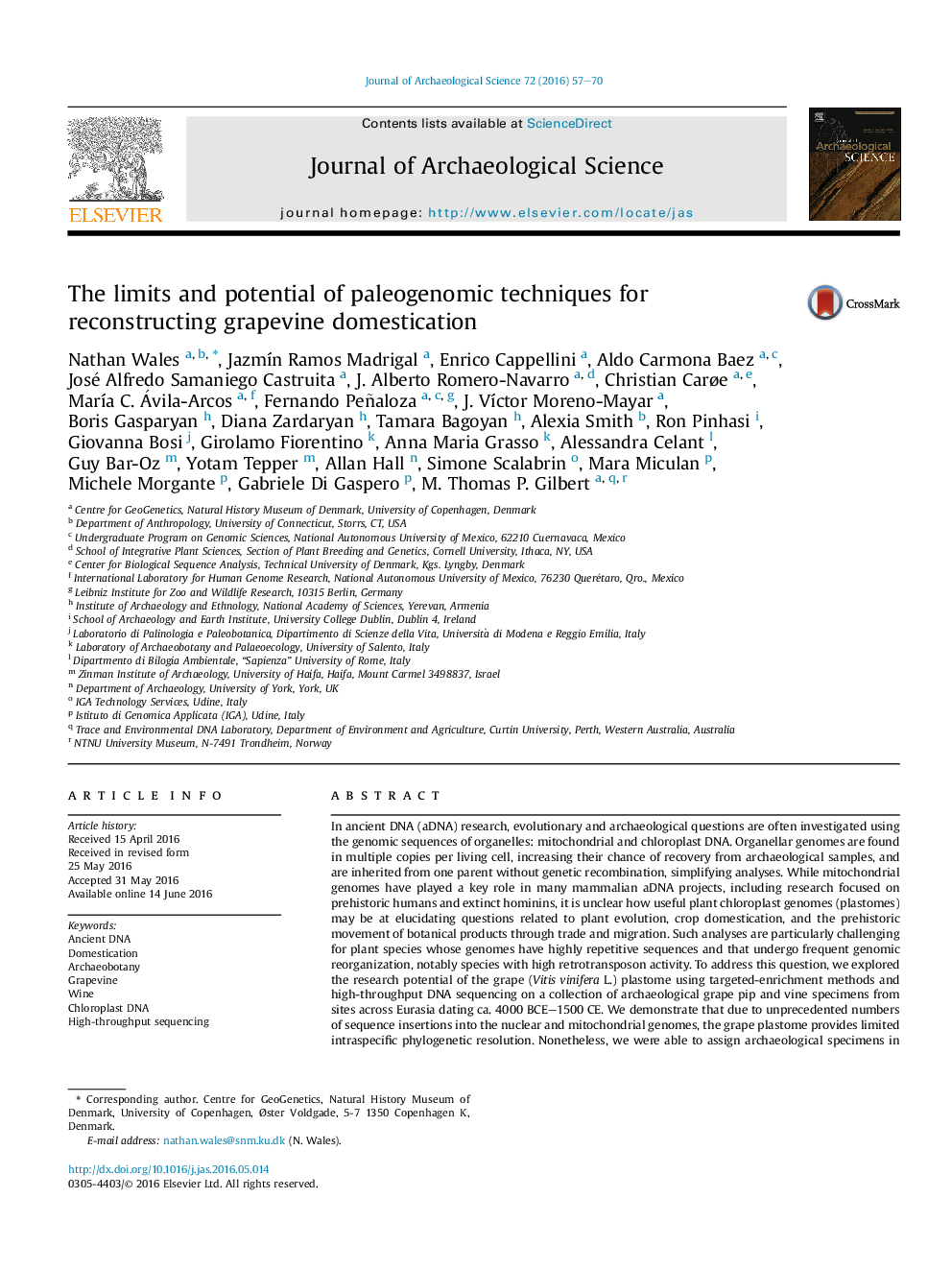| کد مقاله | کد نشریه | سال انتشار | مقاله انگلیسی | نسخه تمام متن |
|---|---|---|---|---|
| 7441262 | 1483888 | 2016 | 14 صفحه PDF | دانلود رایگان |
عنوان انگلیسی مقاله ISI
The limits and potential of paleogenomic techniques for reconstructing grapevine domestication
ترجمه فارسی عنوان
محدودیت ها و پتانسیل تکنیک های پالئولومومیک برای بازسازی انگور زینتی انگور
دانلود مقاله + سفارش ترجمه
دانلود مقاله ISI انگلیسی
رایگان برای ایرانیان
کلمات کلیدی
موضوعات مرتبط
مهندسی و علوم پایه
مهندسی مواد
دانش مواد (عمومی)
چکیده انگلیسی
In ancient DNA (aDNA) research, evolutionary and archaeological questions are often investigated using the genomic sequences of organelles: mitochondrial and chloroplast DNA. Organellar genomes are found in multiple copies per living cell, increasing their chance of recovery from archaeological samples, and are inherited from one parent without genetic recombination, simplifying analyses. While mitochondrial genomes have played a key role in many mammalian aDNA projects, including research focused on prehistoric humans and extinct hominins, it is unclear how useful plant chloroplast genomes (plastomes) may be at elucidating questions related to plant evolution, crop domestication, and the prehistoric movement of botanical products through trade and migration. Such analyses are particularly challenging for plant species whose genomes have highly repetitive sequences and that undergo frequent genomic reorganization, notably species with high retrotransposon activity. To address this question, we explored the research potential of the grape (Vitis vinifera L.) plastome using targeted-enrichment methods and high-throughput DNA sequencing on a collection of archaeological grape pip and vine specimens from sites across Eurasia dating ca. 4000 BCE-1500 CE. We demonstrate that due to unprecedented numbers of sequence insertions into the nuclear and mitochondrial genomes, the grape plastome provides limited intraspecific phylogenetic resolution. Nonetheless, we were able to assign archaeological specimens in the Italian peninsula, Sardinia, UK, and Armenia from pre-Roman to medieval times as belonging to all three major chlorotypes A, C, and D found in modern varieties of Western Europe. Analysis of nuclear genomic DNA from these samples reveals a much greater potential for understanding ancient viticulture, including domestication events, genetic introgression from local wild populations, and the origins and histories of varietal lineages.
ناشر
Database: Elsevier - ScienceDirect (ساینس دایرکت)
Journal: Journal of Archaeological Science - Volume 72, August 2016, Pages 57-70
Journal: Journal of Archaeological Science - Volume 72, August 2016, Pages 57-70
نویسندگان
Nathan Wales, JazmÃn Ramos Madrigal, Enrico Cappellini, Aldo Carmona Baez, José Alfredo Samaniego Castruita, J. Alberto Romero-Navarro, Christian Carøe, MarÃa C. Ávila-Arcos, Fernando Peñaloza, J. VÃctor Moreno-Mayar, Boris Gasparyan,
